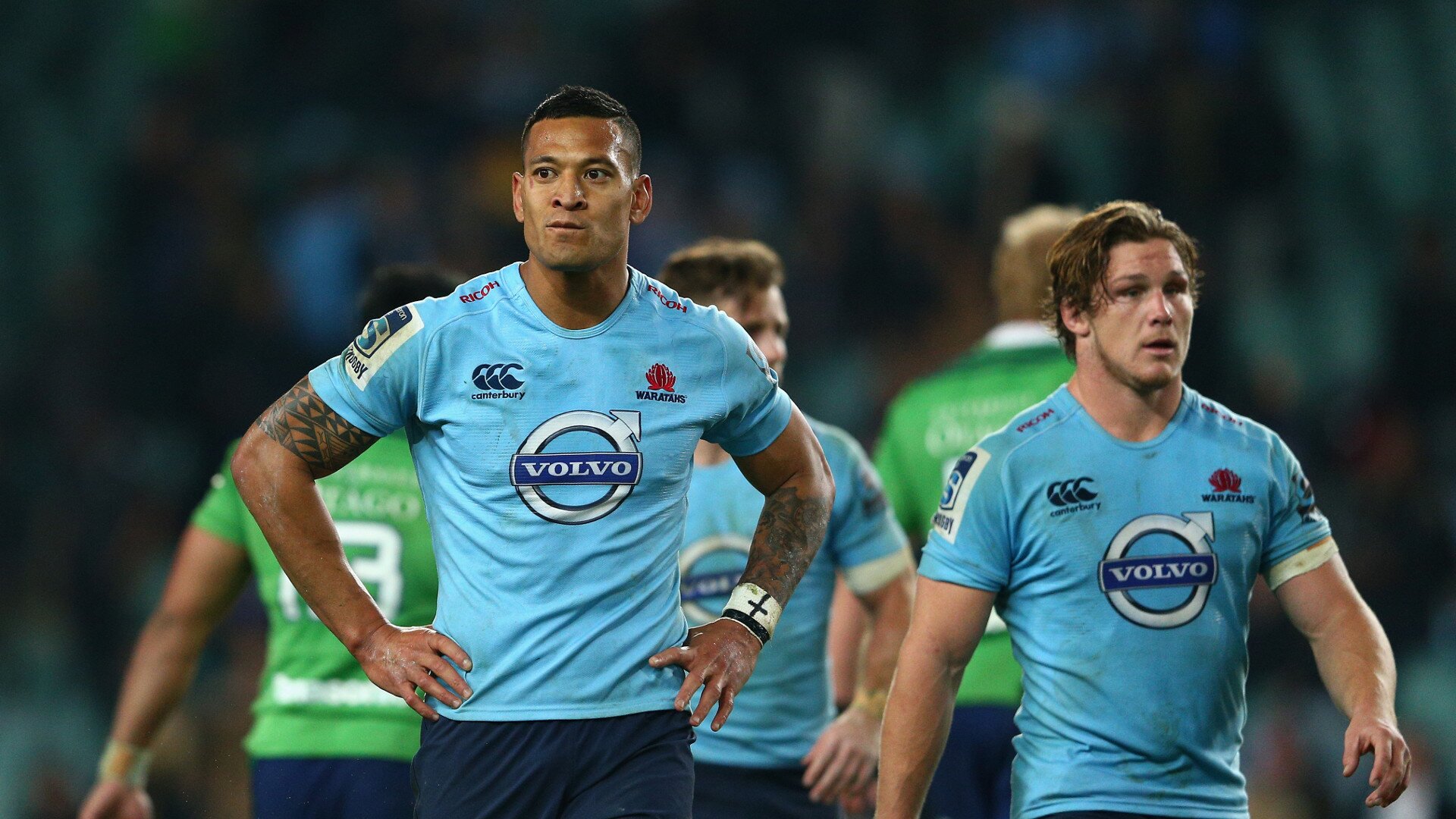Stats show just how much Folau is missed at the Waratahs

Maybe there isn’t hope for the NSW Waratahs beyond Israel Folau after all.
At least not until they find a way to pick up the slack from Super Rugby’s all-time leading try-scorer.
As the suspended Folau prepares to fight for his career at a Rugby Australia code of conduct hearing in Sydney on Saturday, the Waratahs flew out of Sydney on Sunday to fight for their season on a two-game tour of South Africa.
Already reeling from a demoralising 23-15 home loss to the Sharks on Saturday night, the Waratahs lost Wallabies hooker Tolu Latu (calf), prop Rory O’Connor (ribs) and flanker Jack Dempsey (back) for crunch matches against the Bulls and Lions on the high veldt.
Lock Jed Holloway also remained in Sydney ahead of his SANZAAR code of conduct hearing after being sent off for striking Sharks prop Thomas du Toit during the Waratahs’ forgettable first outing at Parramatta’s plush new Bankwest Stadium.
As if being down on big, aggressive forwards to take on the South African brutes wasn’t bad enough, damning statistics show how badly the Waratahs are missing not only Folau but also Taqele Naiyaravoro since the barnstorming winger defected to the English Premiership after last season.
Between them, Folau (11) and Naiyaravoro (15) bagged almost half of NSW’s 59 tries in 2018.
Even after being stood down for his controversial social media posts, Folau remains the Waratahs’ top try-scorer this campaign with four from seven games.
From an average of almost five tries a game last year, the Waratahs are down to an average of less than three a match in 2019 – and have crossed for only two in both outings since Folau was suspended.
Waratahs coach Daryl Gibson admits there’s no quick fix for his side’s attacking woes.
“A lot of that try-scoring (last year) came out of two blokes – we acknowledge that,” Gibson said.
“But we seem to be putting ourselves in position to score tries and not taking them as w ell as we could.
“We had some nice field position early in that game (against the Sharks) – two missed lineouts overthrown at the back and we’re not capitalising on those critical moments and not executing that stuff.
“And when you’re short of try-scoring, that’s going to hurt you.”
The Waratahs’ latest stumble left last year’s semi-finalists four points behind Australian conference leaders the Melbourne Rebels, who have already made the testing trip to South Africa.
“We’re certainly at a critical juncture. The season’s thrown a lot at us and it’s going to require us showing a great deal of resilience,” Gibson said.
“We’ve got a two-week tour now and it’s very clear what we need to get from that tour.”
AAP


































